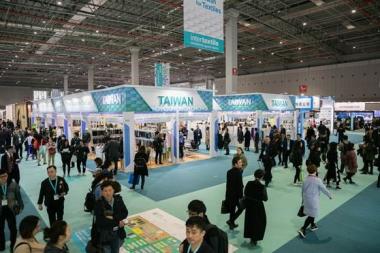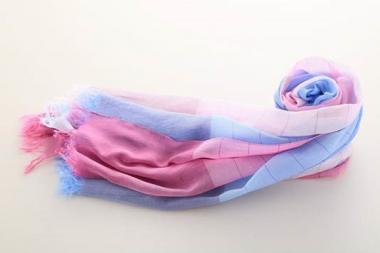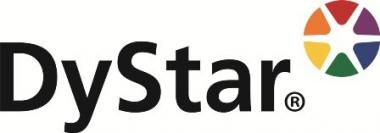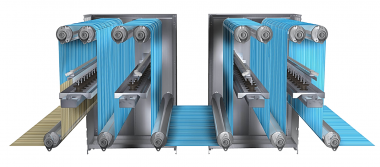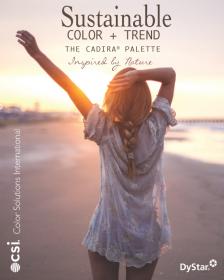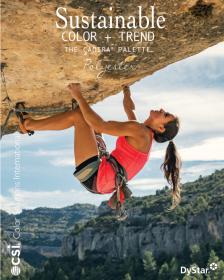Largest range of exhibitors from Asia awaits at Intertextile Shanghai Apparel Fabrics
For buyers that prioritise having the widest range of sourcing options in one place, their best bet is March’s Intertextile Shanghai Apparel Fabrics. Boasting pavilions from Japan, Korea, Pakistan and Taiwan, individual exhibitors from Hong Kong, India, Indonesia and Vietnam, not to mention 2,800-plus Chinese exhibitors, the fair is the largest gathering of Asian suppliers under one roof for the spring / summer sourcing season. To ensure convenience for buyers, international exhibitors are grouped by country or region, while Chinese exhibitors are located in product halls including fabrics for casualwear, functional wear / sportswear, ladieswear, lingerie & swimwear, shirting and suiting, as well as for accessories and denim.
In total, around 3,300 exhibitors will showcase their apparel fabrics and accessories at the fair, with the SalonEurope zone hosting premium suppliers from Europe – including pavilions and zones from France, Germany, Italy and Turkey – while the International Hall also houses other overseas exhibitors from the likes of Argentina, Australia, Peru the US and elsewhere.
Japan Pavilion keeps ‘Banshu-Ori’ tradition alive
Organised by the Japan Fashion Week Organization (JFW), the Japan Pavilion will house 22 exhibitors and also feature a Japan Trend Corner. After the immense popularity of this pavilion with buyers in previous editions, the organisers are in a good position to comment on the trends in the local market. “The now mature Chinese market tends to seek out very different types of products and purchase in smaller batches, which is a world away from the mass-production focus of the past,” JFW commented.
Included in this edition’s Japan Pavilion are three companies from the Nishiwaki region, which is famous for its ‘Banshu-Ori’, or Banshu weave. Banshu-Ori is a yarn-dyed fabric, woven into various patterns, such as checks and stripes, with yarns that are dyed before being woven by weaving machines. This tradition dates back to 1792, and will be showcased by Bon Co Ltd, Ueyama Orimono Corp and Kuwamura Co Ltd at the fair. Bon will showcase a range of new products using this traditional technique, including organic cotton fabrics, paper yarn fabrics and indigo items. Ueyama Orimono, which boasts Japan’s largest dyeing factory in Nishiwaki, designs its own fabrics in Tokyo, and will present cotton, cotton / linen and medium-thin yarn-dyed fabrics at the fair. Kuwamura will showcase fabrics based on 100% yarn-dyed cotton, as well as cotton and cotton-blend materials.
Taiwan Pavilion the place to find innovation
The Taiwan Pavilion, with over 40 participating companies, is a guaranteed source of innovation at the fair, with a number of exhibitors also offering eco-friendly options. Some of the highlights include:
- Keen Ching Industrial: they will have a number of their patented KCC-branded zippers at the fair including a durable double-coil zipper, an invisible zipper with a movable retainer box, a track type water-repellent zipper, a curved metal zipper and more.
- Handseltex Industrial: will showcase a wide range of products including lace, jacquard and mesh, made with the likes of organic cotton and recycled polyester with an eco-friendly production process.
- Paltex: the company’s ‘From Waste to Yarn’ regeneration system involves turning waste fishing nets and plastic bottles from the ocean into polyester and nylon fabrics, membranes and trimmings.
- Superwill: their unique gradient fabric combines specialty yarns and a special knitting process, and features a thickness that decreases from top to bottom. This design allows the fabric to be tailored to different garments.
- Tri Ocean Textile: will feature its own DreamFel® high-performance filament polypropylene yarn which is lightweight, durable and environmentally friendly, and used in sports & outdoor apparel and outdoor furniture.
The Taiwan Pavilion will be full of innovative textile solutions again this edition
The Korea and Pakistan Pavilions round out the Asian offerings. Nearly 60 Korean exhibitors will showcase predominantly manmade, fancy, knitted, acetate woven, tricot, jacquard, faux leather and printed fabrics, as well as lace and embroidery, for ladieswear, while other members will feature fabrics for sportswear and outdoor wear. Those from Pakistan, meanwhile, will feature in the Beyond Denim hall and offer a wide range of denim products.
In addition to Intertextile Shanghai Apparel Fabrics, four other textile fairs also take place at the National Exhibition and Convention Center: Yarn Expo Spring, Intertextile Shanghai Home Textiles – Spring Edition, fashion garment fair CHIC and knitting fair PH Value.


